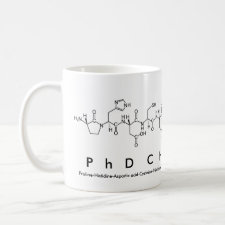
Authors: Dai CM, Zhou XF, Zhang YL, Liu SG, Zhang J
Article Title: Synthesis by precipitation polymerization of molecularly imprinted polymer for the selective extraction of diclofenac from water samples.
Publication date: 2011
Journal: Journal of Hazardous Materials
Volume: 198
Issue: (1)
Page numbers: 175-181.
DOI: 10.1016/j.jhazmat.2011.10.027
Alternative URL: http://www.sciencedirect.com/science/article/pii/S0304389411012672
Abstract: A molecularly imprinted polymer (MIP) was synthesized by precipitation polymerization using diclofenac (DFC) as a template, 2-vinylpyridine (2-VP) as functional monomer, ethylene glycol dimethacrylate (EGDMA) as cross-linker, and toluene as porogen. The MIP showed outstanding affinity toward DFC in aqueous solution with a binding site capacity (Qmax) of 324.8 mg/g (1.09 mmol/g) and was used as solid-phase extraction (SPE) material for the quantitative enrichment of DFC in environmental water samples and off-line coupled to a reversed-phase HPLC/DAD. Various parameters including washing solvent, elution solvent and breakthrough volume affecting the extraction efficiency of the polymers have been evaluated to achieve the selective preconcentration of DFC from water samples and to reduce non-specific interactions. Recoveries of DFC extracted from tap water, river water and wastewater samples were higher than 95%, and no significant DFC recovery difference was obtained among the different water matrix. The stability of MIP was tested by consecutive percolation of water sample, and it was shown that the performance of the MIP did not vary even after 30 adsorption and desorption cycles. Furthermore, the MISPE was used for the analysis of DFC in river water and wastewater samples and revealed DFC concentrations of 0.69 ± 0.002 μg/L (n = 3) and 0.31 ± 0.004 μg/L (n = 3), respectively. The results were in good agreement with corresponding LCG-MS/MS data.
Template and target information: diclofenac, DFC
Author keywords: pharmaceuticals, diclofenac, molecularly imprinted polymer, Solid-phase extraction, selective extraction, Environmental water samples



Join the Society for Molecular Imprinting

New items RSS feed
Sign-up for e-mail updates:
Choose between receiving an occasional newsletter or more frequent e-mail alerts.
Click here to go to the sign-up page.
Is your name elemental or peptidic? Enter your name and find out by clicking either of the buttons below!
Other products you may like:
 MIPdatabase
MIPdatabase









